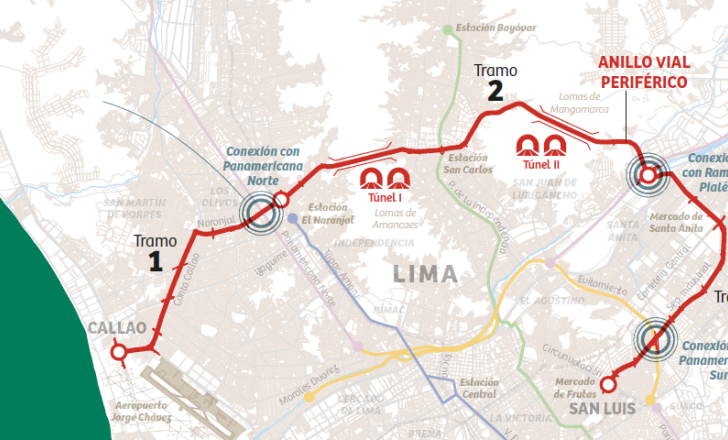
Proinversión, Peru’s Private Investment Promotion Agency, announced the award. The Peripheral Ring Road is expected to transform Lima and will be integrated into road infrastructure planning at the local, regional and national levels. The new road is intended to solve the challenges posed by mobility in Lima and nearby areas.
This project comprises the design, financing, construction, management and maintenance of a 35km urban toll road. The new road, connecting 11 districts in Greater Lima and one in Callao, will benefit 4.5 million people. There will be toll-free side lanes in both directions along the main route.
The Peripheral Ring Road project will use state-of-the-art technology, such as Building Information Management (BIM) and Asset Management and Intelligent Transportation Systems (ITS), to ensure that the infrastructure is managed efficiently and safely.
The road will be operated under a co-financed Public-Private Partnership (P3) model, in which toll revenues will cover operation and maintenance costs and partially repay the initial investment. The term of the concession has been defined as 30 years from contract signature, or until the designated Present Value of Toll Revenues (PVR) is reached. The contract provides for the possibility of extending the concession period if the PVR has not been achieved by year 30.
The project is being carried out in three stages and its cost has increased considerably since it was first conceived. Featuring a design speed of 80km/h, the route will have 35 overpasses, 17 interchanges and two tunnels.













